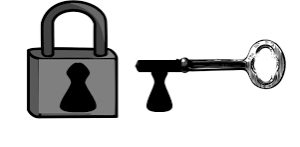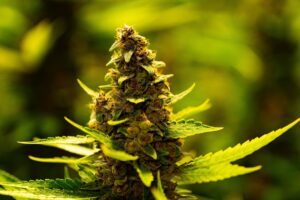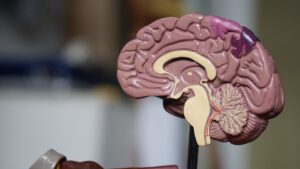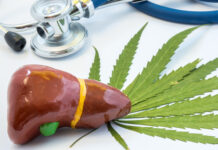Most people have heard of the two major principle cannabinoids, THC and CBD. But other cannabinoids may also demonstrate value for medical cannabis patients. This article explores lesser-known cannabinoids such as CBN, CBC, CBG, and THCV.

Within the cannabis plant, there exists a cornucopia of active cannabinoids, each possessing unique properties. These cannabinoids seamlessly interact with our pre-existing endocannabinoid system (ECS) to generate potentially therapeutic effects. Before we dive into the many different active cannabinoids and their characteristics, let’s first define what the endocannabinoid system is and how cannabinoids interact with the human body.
What is the Endocannabinoid System (ECS)?
Present in all vertebrates and invertebrates is an interconnecting network called the endocannabinoid system or “ECS” for short. The ECS is a physiological system that is always operating behind the scenes to maintain a constant state of biological equilibrium, or “homeostasis.”
Maintaining a perpetual and harmonic state of homeostasis is essential to our life because it ensures that all cellular functions are working together in concert. Intricate and intelligent, the ECS continuously regulates many neurobiological functions ranging from pain perception, stress and anxiety management, motor activity and coordination, appetite, memory, and reproductive functions, among many other critical mechanisms.
In simple terms, our endocannabinoid system helps us constantly adapt to our environment by helping us cope with fear, anxiety, stress, hunger, and other stimuli. Making up the endocannabinoid system are cannabinoid receptors – the two most essential receptors being CB1 and CB2. These receptors are expressed throughout every major system of the human body, such as the nervous system and the immune system.
 Lock and Key
Lock and Key
In response to ever-changing environmental stimuli, our bodies naturally produce our endocannabinoids that uniquely bind to our ECS receptors to maintain homeostasis. Imagine ECS receptors as an exclusive lock that can only be unlocked by the key signature of specific endocannabinoids.
Active cannabinoids such as THC, CBD, CBC, and CBG closely resemble our natural occurring endocannabinoids and as a result, are compatible with our endocannabinoid system. This inherent compatibility and the fact that there is an entire network of ECS receptors littered throughout our bodies explains why medical cannabis exerts such profound effects on human beings.
 Lesser-known Cannabinoids and Their Effects
Lesser-known Cannabinoids and Their Effects
Now that we’ve covered how cannabinoids bind and interact with our endocannabinoid system, it’s time to take a look at the main principle cannabinoids in greater detail. As most people are already aware of THC and CBD, we’ll be covering the following lesser-known cannabinoids:
- CBN
- CBG
- CBC
- THCV
What is CBN?
After THC and CBD, CBN or Cannabidol is one of the most abundant cannabinoids found in the cannabis plant. As the cannabis plant ages and is further exposed to temperatures and light, this degradation process causes THC to gradually convert into CBN. Although THC and CBN both share similar chemical compositions, CBN is only minimally psychoactive.
Drawing from a 1973 clinical study headed by Dr. Perez-Reyes involving subjects consuming CBN through smoking and oral methods, all subjects reported their experiences to be “mild and enjoyable” and noted that the experience was not as psychoactive as smoking cannabis. As a result, CBN may be a desirable option for patients who wish to avoid the psychoactive effects of THC.
 CBN and Potential Health Benefits
CBN and Potential Health Benefits
Even though scientific research on CBN is still minimal, early findings from the U.S-based cannabis research laboratory, Steep Hill show CBN having sleep-promoting qualities that are on par with benzodiazepines (e.g., Xanax) but without the addiction and withdrawal risks.
In a 2012 study, Jonathan A. Farrimond and his team of researchers tested cannabinoids, CBD, CBN and CBG on rats. Their findings indicated that CBN caused increased appetite stimulation in rats. Interestingly enough, they found that CBD had the opposite effect and was seen to decrease appetite. CBN may also be an effective antibiotic in treating MRSA bacteria, which is a group of infections that are known for being especially resistant to antibiotics. CBN was also observed to be an effective anticonvulsant along with cannabinoids, THC and CBD.
 What is CBG?
What is CBG?
CBG or Cannabigerol is another minor cannabinoid that is derived from CBGA – the parent compound from which other cannabinoids are created. As the cannabis plant approaches developmental maturity, most of the CBG is converted into other cannabinoids, resulting in approximately 1% CBG in the cannabis plant. Typically, CBG is mostly found in hemp products and CBD-rich strains. Similar to CBD, CBG is known for its non-intoxicating effects.
CBG and Potential Health Benefits
A 2013 study cited from ScienceDirect.com concluded that CBG effectively treated inflammatory bowel disease (IBD) in mice. After inducing colitis in lab mice, researchers observed how the application of CBG reduced both colon weight, colon length ratio and other factors that resulted in overall benefit.
A 2014 study headed by Sara Valdeolivas showed that CBG displayed active neuroprotective properties in her experiments with mice. Therefore, CBG may be effective in combating neurodegenerative illnesses such as Huntington’s disease.
According to the National Center for Biotechnology Information, CBG may also be an effective therapy for psoriasis. Psoriasis is a very common skin condition characterized by the overproduction of cells that results in extra thick, scaly patches of skin usually appearing on the knees, elbows, lower back, and scalp. CBG is a robust cannabinoid displaying potential health benefits ranging from combating certain resistant bacteria, providing pain relief and even showing antidepressant characteristics.
What is CBC?
CBC or Cannabichromene is yet another lesser-known cannabinoid. Similar to CBD and CBG, CBC is non-psychoactive. Like all of the aforementioned cannabinoids, researchers believe that CBC works cooperatively and synergistically with other active cannabinoids in what is known as the “Entourage Effect.” The Entourage effect is the proposed assertion that cannabis works more effective when taken as a whole, rather than as isolates. Found in small amounts in cannabis strains, CBC originates from the parent compound, CBG.
 CBC and Potential Health Benefits
CBC and Potential Health Benefits
A 2010 study published in the National Center for Biotechnology Information studied how CBC impeded tumor growth in mice. CBC also exhibits properties in reducing pain and inflammation. Another 2010 study examined how CBC and CBD produced significant antidepessant-like effects and could potentially act as an effective mood-boosting agent.
A 2015 study authored by Jack A. Prenderville asserts that CBC may promote adult neurogenesis – the birth and development of new neurons. This very preliminary finding is groundbreaking for the sole reason that CBC may be an effective strategy in managing progressive brain disorders.
What is THCV?
THCV or Tetrahydrocannabivarin results when its acidic form, THCVA is decarboxylated with heat or UV light. Typically found in very small amounts in cannabis strains, THCV like all of the cannabinoids mentioned previously can be isolated and extracted for larger quantities.
 THCV and Potential Health Benefits
THCV and Potential Health Benefits
As with most lesser-known cannabinoids, the research available for THCV is limited. But a 2013 study published in the NCBI that assessed the use of THCV with obese rats concluded that THCV is a “new potential treatment against obesity-associated glucose intolerance with pharmacology different from that of CB1 inverse agonist/antagonists.”
In simpler terms, THCV demonstrates potent appetite-suppressing qualities which may be useful in managing obesity and/or type 2 diabetes.
At low doses, THCV appears to curb the effects of THC. However, at higher doses, THCV can be found to enhance and promote THC’s effects. A 2010 U.K study found that THCV suppressed seizure in adult rats, shedding potential light on THCV’s efficacy as an epileptic therapeutic treatment.
A 2011 study led by C. Garcia concluded that THCV shows great promise in “both for the treatment of disease progression in PD and for the relief of PD symptoms. This represents an important advance in the search for potential noel anti-parkinsonian agents since Delta 9 – THCV administered alone or in combination with CBD may provide a much needed improved treatment for PD.”
When medical cannabis patients consume whole dried flower, they are ingesting beneficial cannabinoids in varying amounts. Due to the recent surge of interest in lesser-known cannabinoids such as CBN and CBC, licenced producers are continually working on isolating and promoting some of these more obscure cannabinoids.





